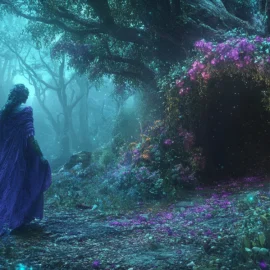
Why do some revolutionary ideas take years or even decades to gain traction in society? Why do some good ideas fail? What forces stand between a brilliant insight and its widespread acceptance?
New ideas often face significant barriers to implementation and adoption. In his book, Seeing What Others Don’t, Gary Klein explains why good ideas fail by identifying two critical challenges: the difficulty of taking action on insights and the resistance we encounter when sharing them with others.
Keep reading to explore how these barriers operate and what we can learn from historical examples that illustrate idea failures.
Why Good Ideas Fail
While insights begin as personal revelations, their impact often extends far beyond the individual—and this is where many insights falter. Klein identifies two reasons why good ideas fail to take root:
- It’s usually difficult to take action on our insights.
- We often face resistance when trying to convince others of the value of our insights.
The first challenge is that insights often demand uncomfortable or unconventional actions. It’s not enough to have the breakthrough thought; we must be willing to act on it, even when doing so feels risky. Consider physician Ignaz Semmelweis’s insight about handwashing in medical settings: In 1846, he realized doctors were spreading deadly infections by moving directly from performing autopsies to delivering babies without washing their hands. While this insight seems obvious today, acting on it required Semmelweis to tell his colleagues—respected physicians—that their actions were killing their patients. He had to risk his professional relationships and reputation to implement what we now know was a lifesaving practice.
The second challenge emerges when we try to share our insights with others and face resistance from people who haven’t experienced the same shift in understanding. The more an insight challenges established practices or beliefs, the more evidence it requires to gain acceptance. This explains why Edwin Hubble faced such resistance when he discovered the Andromeda “nebula” was actually a galaxy far outside our own Milky Way. His insight that the universe extended far beyond our galaxy contradicted the prevailing belief that our galaxy constituted the entire universe. It took years of careful observation and documentation before the astronomical community accepted this revolutionary new understanding of cosmic scale.
Understanding these twin challenges—the difficulty of acting on insights ourselves and the resistance we face when sharing them—helps explain why many valuable insights never reach their full potential. But Klein’s research reveals that insights aren’t just random strokes of genius. They arrive through specific pathways that we can learn to recognize, cultivate, and most importantly, act upon, even in the face of these challenges.
| Why the Nazi Party Rejected the Insights of Modern Art The Nazi Party’s “Degenerate Art” exhibition of 1937 perfectly illustrates the two key challenges that Klein explains insights face: the difficulty we have trying to act on them and the resistance we encounter from others when we try to share them. Modern artists had achieved profound insights about new ways to represent reality, breaking from traditional representation to explore abstraction, expressionism, and other innovative approaches. But these insights faced enormous resistance precisely because they challenged fundamental assumptions about art, culture, and society itself. Modern artists had to take bold, often professionally risky actions to pursue their insights. Artists like Wassily Kandinsky and Paul Klee abandoned successful careers in traditional art to explore new forms of expression, knowing they would face ridicule and rejection. The Nazi response demonstrates the extreme end of the resistance that can follow when insights challenge deeply held beliefs. Rather than trying to understand the new perspectives these artists offered, the Nazi regime removed 15,550 modern artworks from German museums, staged a mock exhibition to ridicule the work, deliberately hung paintings askew and added insulting graffiti, and hired actors to mingle with crowds and criticize the art. This systematic attempt to discredit modern art shows how threatening genuine insights can be to established power structures. The Nazis didn’t just dislike the aesthetics of modern art or disagree with what it was saying about the world: They saw it as a fundamental threat to their worldview and mounted an organized campaign to suppress it. According to some critics, this pattern of institutional resistance to artistic insights continues today, as seen in the US government’s control of arts funding and architectural style. |






